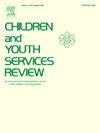探讨家庭关系对学生学校幸福感的影响
IF 1.7
2区 社会学
Q1 FAMILY STUDIES
引用次数: 0
摘要
本研究的目的是探讨家庭关系在影响青少年学生在学校环境中的幸福体验方面的潜在意义,为促进青少年发展的支持性环境的更广泛论述做出贡献。本研究采用定量方法,并通过调查法进行相关设计。来自印度喀拉拉邦的715名高中生,其中66%为女生,34%为男生,完成了家庭关系问卷和学生主观幸福感测量。采用Spearman相关和多元回归分析。根据分析结果发现,家庭关系的三个维度正相关,sig值为<;因此,Ha1被接受。多元回归结果显示,在家庭关系测量的三个维度中,家庭一致性(p < .001)是学生主观幸福感的最显著预测因子。家庭表达能力(p < .01)是影响学生学校幸福感的第二大因素。同时,研究结果显示,没有确凿的证据表明家庭冲突具有预测意义。因此,除家庭冲突维度外,Ha 2被接受。由此可以推断,家庭关系的各个方面都与学生的幸福感呈正相关。然而,只有家庭一致性和表达性对印度高中生的幸福感有实质性影响,而家庭冲突对印度高中生的幸福感没有实质性影响。本文章由计算机程序翻译,如有差异,请以英文原文为准。
Exploring the influence of family relationship on students’ school well-being
The purpose of the study was to examine the potential significance of familial relationships in influencing adolescent students’ experiences of happiness within the school context, contributing to the broader discourse on fostering a supportive environment for youth development. The method in this research used a quantitative approach with a correlational design through a survey method. A sample of 715 higher secondary students, comprising 66 % girls and 34 % boys from Kerala, India, completed the family relationship questionnaire and students’ subjective well-being measure. The analysis used was Spearman’s Correlation and Multiple Regression. Based on the analysis results, it was found that the three dimensions of family relationship are positively correlated with a sig value of < .01. Thus, Ha1 was accepted. Multiple regression results revealed that family coherence (p < .001) emerged as the most significant predictor of student subjective well-being among three dimensions of family relationship measures. Family expressiveness (p < .01) is the second most influential element on students’ school well-being. Meanwhile, the result shows that there is no conclusive evidence that family conflict has predictive significance. Thus, Ha 2 was accepted except family conflict dimension. It may be inferred that all aspects of family relationship are positively related to student well-being. However, only family coherence and expressiveness have a substantial impact on the well-being of Indian higher secondary students, but family conflict does not.
求助全文
通过发布文献求助,成功后即可免费获取论文全文。
去求助
来源期刊

Children and Youth Services Review
Multiple-
CiteScore
6.30
自引率
6.10%
发文量
303
期刊介绍:
Children and Youth Services Review is an interdisciplinary forum for critical scholarship regarding service programs for children and youth. The journal will publish full-length articles, current research and policy notes, and book reviews.
 求助内容:
求助内容: 应助结果提醒方式:
应助结果提醒方式:


